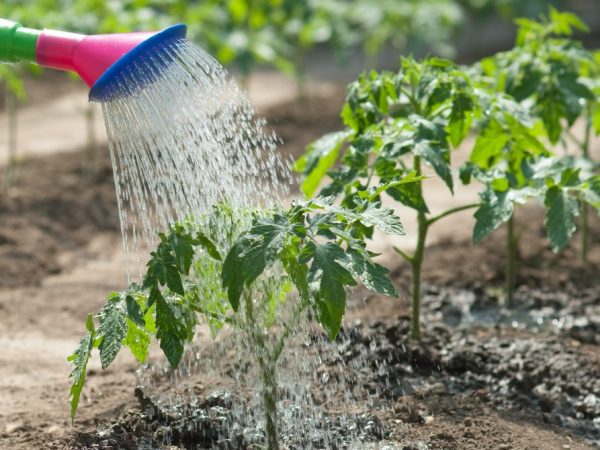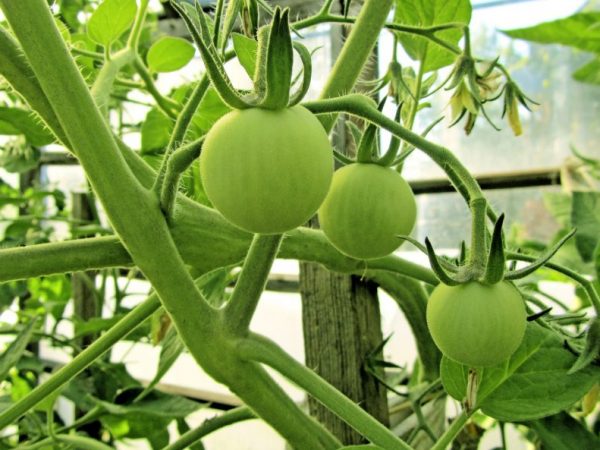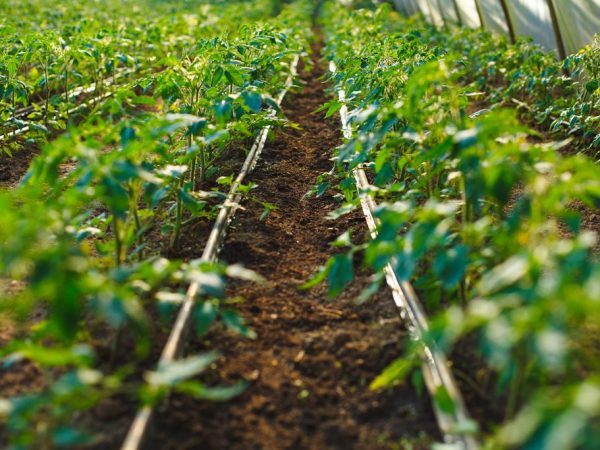How to water tomatoes during the growing process
To harvest a good harvest of tomatoes, it is necessary to feed the plant with fertilizers in a timely manner. Consider when to water and how to properly feed with various fertilizers.

Means for watering tomatoes
Mullein feeding
This fertilizer is widely used in horticulture. Mullein for feeding tomatoes should be used during active leaf formation and ovary formation. This fertilizer is rich in nitrogen. When feeding with manure, it is important not to burn the plants, therefore, the mullein is first diluted with water. With an excess of nitrogen in plants, the green mass actively grows, but the ovary is formed poorly.
Experts recommend using rotted manure for feeding tomatoes, which contains much less nitrogen than fresh manure. You can bring rotted manure into the ground during autumn digging. In this case, you will not have to apply additional fertilizers during the planting of tomato seedlings. And you can dilute 1 kg of rotted manure in 5 liters of water and add the resulting mixture to the root of the tomatoes.
Top dressing of flowering tomatoes
During flowering, the vegetable crop needs complex fertilizers. They are easy to make, taking a mullein as a basis. The best fertilizer for flowering tomatoes is a mixture of high concentration mullein, wood ash and superphosphate. For 5 liters of cow slurry, 0.25 kg of ash and 0.05 kg of superphosphate are taken. The resulting fertilizer is rich in nitrogen, potassium and phosphorus.
Another nutrient mixture is made from mullein, boric acid and nitrophoska. In this case, a mullein diluted with water is used. To prepare 15 liters of fertilizer, you will need 10 liters of water, 0.5 kg of mullein, 1 tbsp. l. nitrophosphate and ½ tsp. acid. The resulting fertilizer is rich in minerals.
Top dressing with horse manure
Horse manure is rich in nitrogen, potassium and phosphorus. It also contains calcium in small amounts. All these trace elements are needed by a growing and fruitful tomato. The quality of horse manure depends on the quality of the horse's nutrition.
Tatiana Orlova (Candidate of Agricultural Sciences):
Horse manure is the best organic fertilizer for heating a greenhouse or greenhouse. Horse manure has a higher "burning" temperature - up to 60 degrees, cattle manure - up to 55 degrees. The duration of decomposition and heat release in the case of horse manure is also longer than that of cattle manure - up to 18 days. But the thickness of the manure layer in this case in the greenhouse should be at least 50 cm. At a lesser thickness, the manure simply does not "burn".
Horse manure is recommended to be applied during the autumn digging: it improves the structure of the soil and enriches it with microelements. Make no more than 6 kg of horse manure per 1 sq. m of land. Fertilize the soil in this way no more than 1 time in 2 years.
Horse manure heats the ground, so it is advisable to use it when growing tomatoes in a greenhouse.Feeding tomatoes with horse manure in a greenhouse requires a certain order of actions:
- remove the top layer of soil (at least 30 cm);
- we lay a four-centimeter layer of horse manure;
- put the removed soil in place.
Such feeding will not only insulate the soil, but also saturate it with microelements necessary for the development of vegetable crops.
With the help of manure, heavy soils can be made light.
Root feeding of tomatoes

Root dressing is done 3 times per season
Root dressing with horse manure can be done 2-3 times per season. The easiest root feeding option is manure infusion. In 8 liters of water, 0.5 kg of horse excrement is diluted and everything is thoroughly mixed. The mixture is left to infuse for 7 days.
Rotted manure is also suitable for root feeding. In the area where the root system of the vegetable crop is located, a small layer of soil is removed, rotted manure is placed there, covered with earth and watered with water. In the northern regions of the country, warm beds are made with the help of horse manure.
Metronidazole treatment
If you need to water a vegetable crop with manure in order to feed it, then metronidazole will help get rid of phytophthora. This product is non-toxic, which allows it to be used even during the fruiting period. If the disease has already struck the beds, before spraying the tomatoes, they get rid of all the affected leaves, after which they are sprayed with metronidazole diluted in water. To prepare 10 liters of solution, you will need 15 tablets of the drug.
It is advisable to carry out preventive treatments of plantings with metronidazole. The first spraying is in June. Since the drug is not toxic, it can be used to process not only tomatoes, but also other crops growing nearby. If the plants show no signs of fungal disease, re-treat them with metronidazole 14 days before harvest.
Tatiana Orlova (Candidate of Agricultural Sciences):
Currently, there is no need to purchase antimicrobial drugs intended for human treatment from pharmacies. There are also similar drugs for the treatment of fungal diseases in plants. These are Trikhodremin, Alirin-B, Glyokladin.
If rot appears on the leaves, plantings are processed daily. It is necessary to spray the beds with a solution, in the preparation of which 1 tablet of the drug is taken for each liter of water. Spray the leaf plates on both sides.
Trichopolum is an alternative to metronidazole. Trichopoly solution is prepared by analogy with metronidazole solution.
Metronidazole treatment does not affect the palatability of tomatoes.
Feeding chicken droppings
Chicken manure is also used as fertilizer. It contains phosphorus, nitrogen, potassium and magnesium. Chicken droppings can be used in several variations to enrich tomatoes with microelements.
Liquid fertilizer is the fastest to prepare. For 20 liters of water, take 1 kg of chicken manure. Everything is thoroughly mixed and left for 10 days. Plants are watered with this solution several times a season. The first time, liquid fertilizer is applied 20-25 days after planting the seedlings in a permanent place. The second time - 30 days after the first. Watering is carried out between the rows. This product is quite concentrated and can burn tomato roots.
It will take 3-4 months to prepare the compost. The droppings are spread on the grass or green tops of vegetable crops and add earth, mix everything thoroughly. All components are taken in approximately the same quantities. It is best to fertilize the beds with compost in early spring, so it is advisable to prepare it in the fall: during the winter, the droppings will crush. The compost is placed between the beds. If you add straw to it, you get mulch.
Tatiana Orlova (Candidate of Agricultural Sciences):
Both the infusion of chicken manure and mullein as a liquid organic fertilizing are applied only after watering the plants, since there is always a danger of scalding the root system.The fact is that the recommended breeding rates for chicken manure and mullein (1: 10 or 1: 20) are not always correct, much depends on the state of the litter: there is litter manure (on straw) and litter-free manure - it is more concentrated.
Potassium monophosphate treatment

You can prepare the fertilizer mixture yourself
Monopotassium phosphate is used if the tomatoes grow poorly or the ovary is poorly formed. It is a mineral fertilizer, which is 52% phosphate and 33% potassium. The remaining 15% are other minerals. You can use the drug on your own or prepare nutritional formula.
To prepare 10 liters of solution, you will need 15 g of powder. This solution is poured over tomato leaves. Re-processing is carried out after 14 days. You cannot use potassium monophosphate more than 2 times in one season.
There is no specific timing for the addition of potassium monophosphate. It is introduced, if necessary, to stimulate the flowering of a vegetable crop. Also, the drug increases the resistance of plants to various diseases, but they should not be treated: it is suitable exclusively for prevention.
Top dressing with onion peels
Onion peel contains antimicrobial substances, vitamins, quartzin and ascorbic acid. The use of onion peel products is justified at any stage of growing a vegetable crop. In addition, such funds have a low cost.
From onion peelings, you can prepare an infusion or decoction. To prepare the broth, the cleaning is placed in a container with water, brought to a boil and boiled for 5-7 minutes, after which the pan is removed from the heat and the broth is cooled. It is best to cook onion broth in an enamel bowl. To prepare the infusion, the purification is poured with boiling water and left for 48 hours. The ratio of purification and water should be 1: 2. Before use, onion infusion is diluted with water in a ratio of 1: 3. The frequency of watering the beds with products made from onion peels can be 3-4 times a week.
Onion remedies can also be used to treat tomatoes: they are effective in pest control. But before you spray the tomatoes, add crushed soap to the infusion or broth and wait until it dissolves.
Onion products are also used for soil disinfection.
Folk remedies
- Mint. You can compensate for the lack of trace elements with the help of yeast, from which the brew is prepared. For its preparation, take 10 liters of water and 2 kg of fresh yeast. Before feeding, the mash is diluted with clean water. 1 part of the mash should have 10 parts of water. The tool is used if the seedlings grow poorly.
- Bread. Brown bread is also used to prepare the nutrient solution. To do this, it is cut into small cubes and dried in the oven, then put into a bucket and poured with warm water. Next, the crackers are pressed down with a load and left for 7 days in a dark place, then the water is drained and 2-3 liters of fresh water are poured. This solution should be used to feed young seedlings, on which 5-6 leaves have already appeared.
- Beer. By diluting the beer with water in a ratio of 1:10, you can get a good growth stimulant.
- Kefir. This fermented milk drink, diluted with water in a ratio of 1: 7, is used for the prevention and treatment of late blight. Even from phytophthora, sediments are treated with saline.
- Urine. This product helps to increase yields. You can use fresh urine, but experts recommend giving preference to a fermented product. Urine not diluted with water is introduced into the soil.
- Ammonia solution (ammonia). This tool is used for nitrogen starvation of vegetable crops. To prepare 10 liters of solution, you will need 20-25 ml of ammonia. Its use is justified if the tomatoes grow poorly.
Store drugs
During the period of active growth and formation of the ovary, it is advisable to feed the vegetable crop with potassium humate. The fertilizer is used as a root top dressing.It is bred according to the instructions on the package.
The store-bought preparation Baikal EM1 gives a good result. It is a growth stimulant that is most effective in greenhouse vegetable cultivation.
Strong seedlings are obtained in coconut substrate. When using it, you do not need to add anything to the hole when planting seeds. You don't have to fertilize the soil while growing tomatoes.



